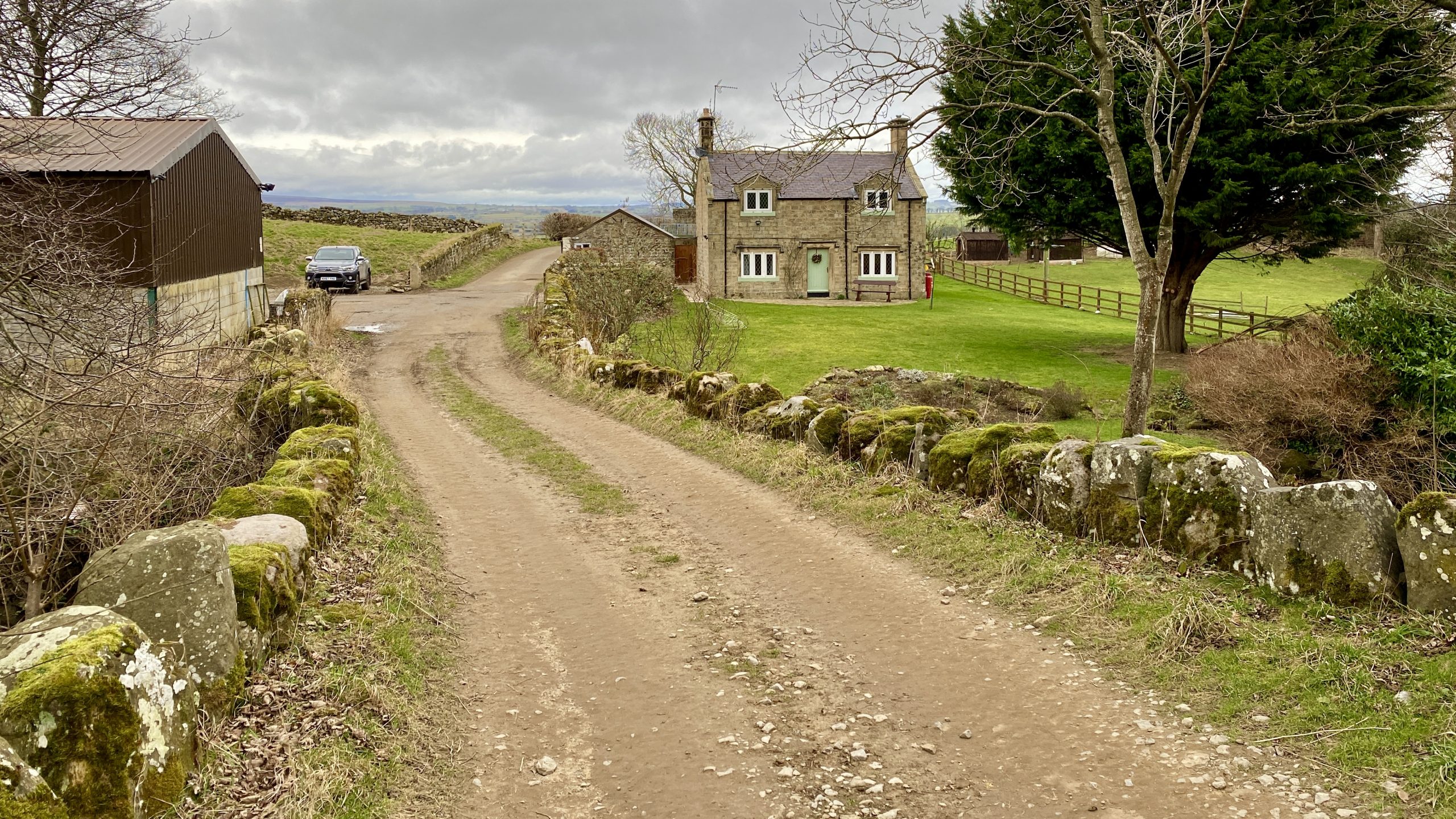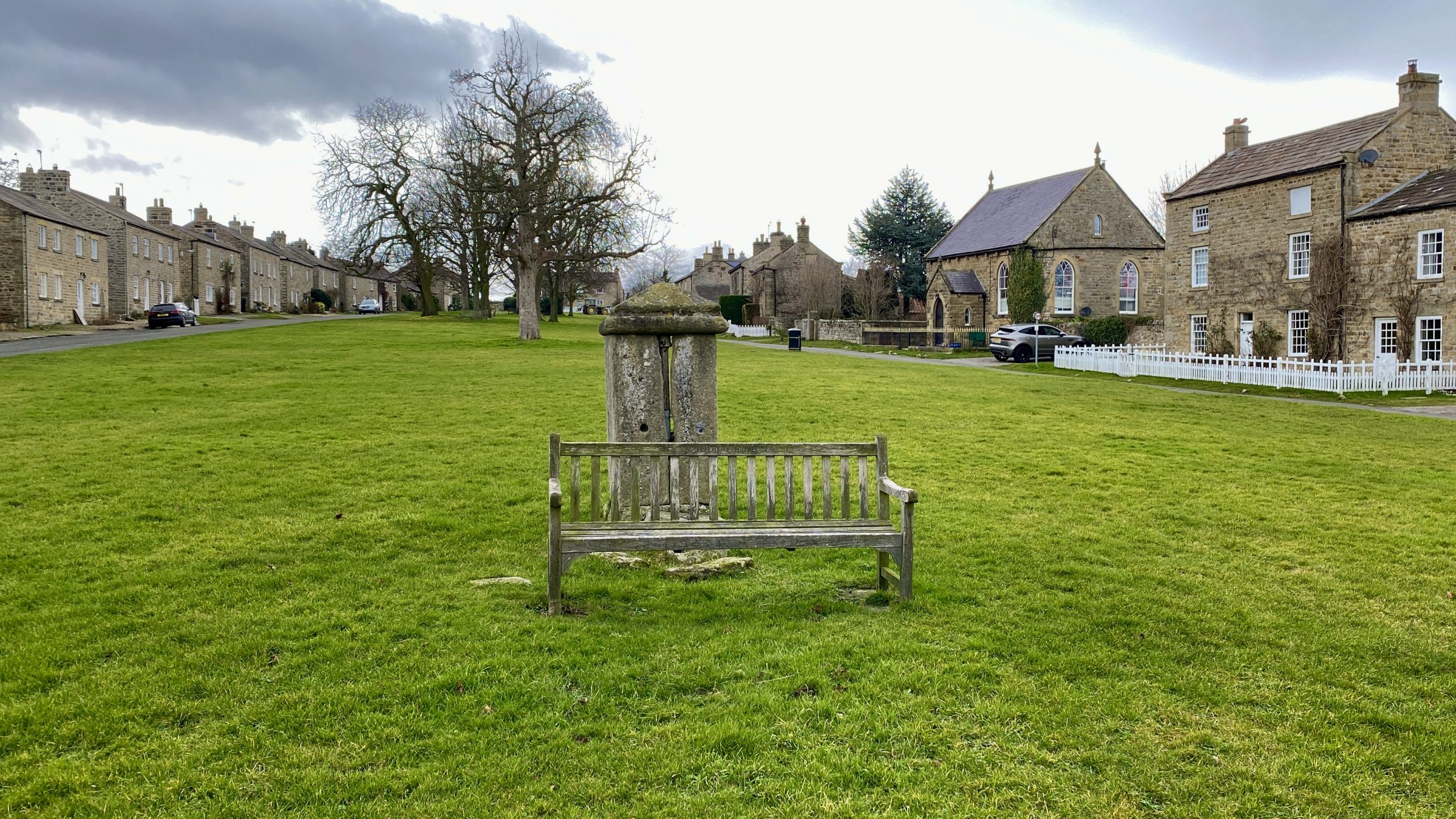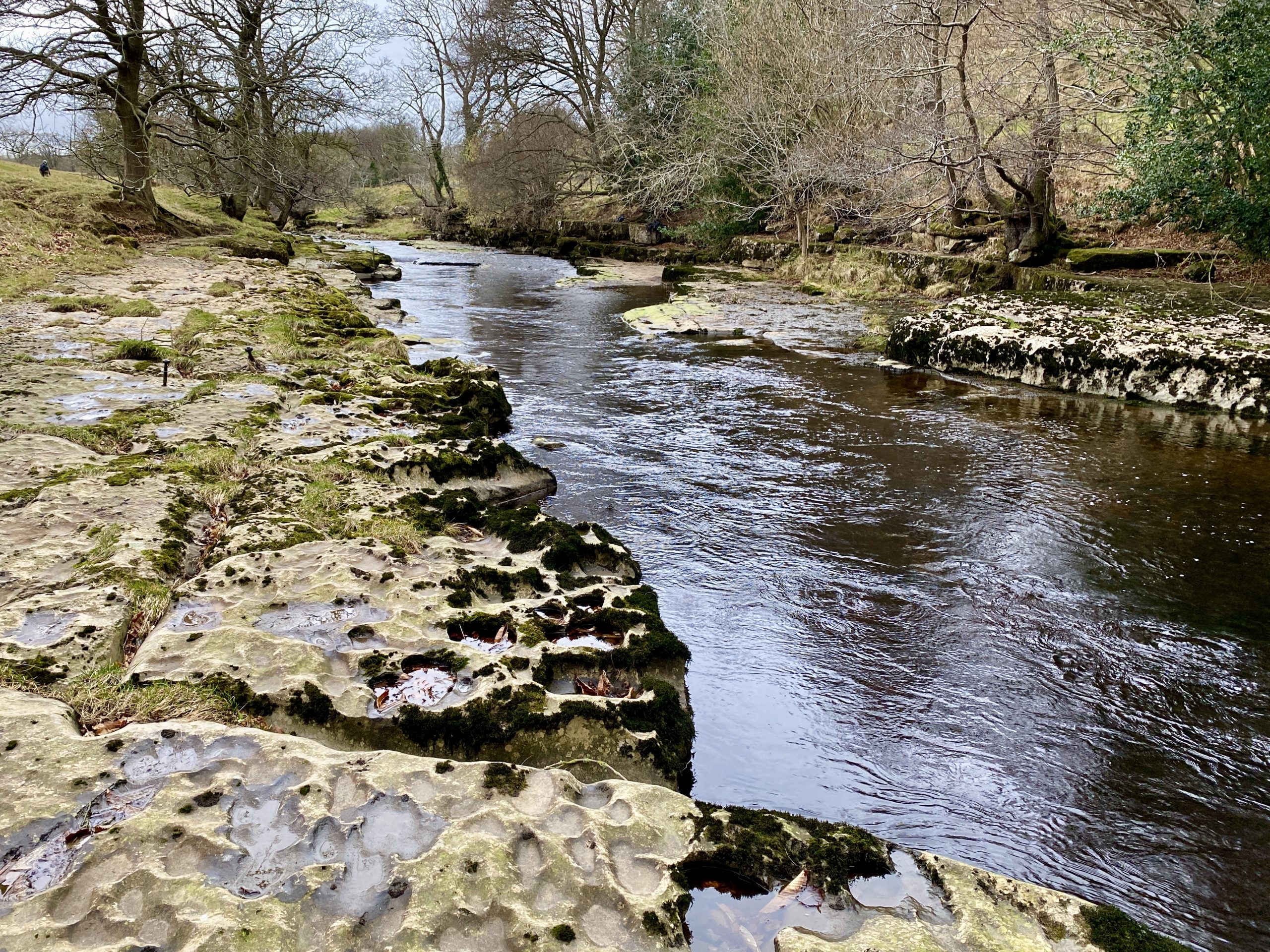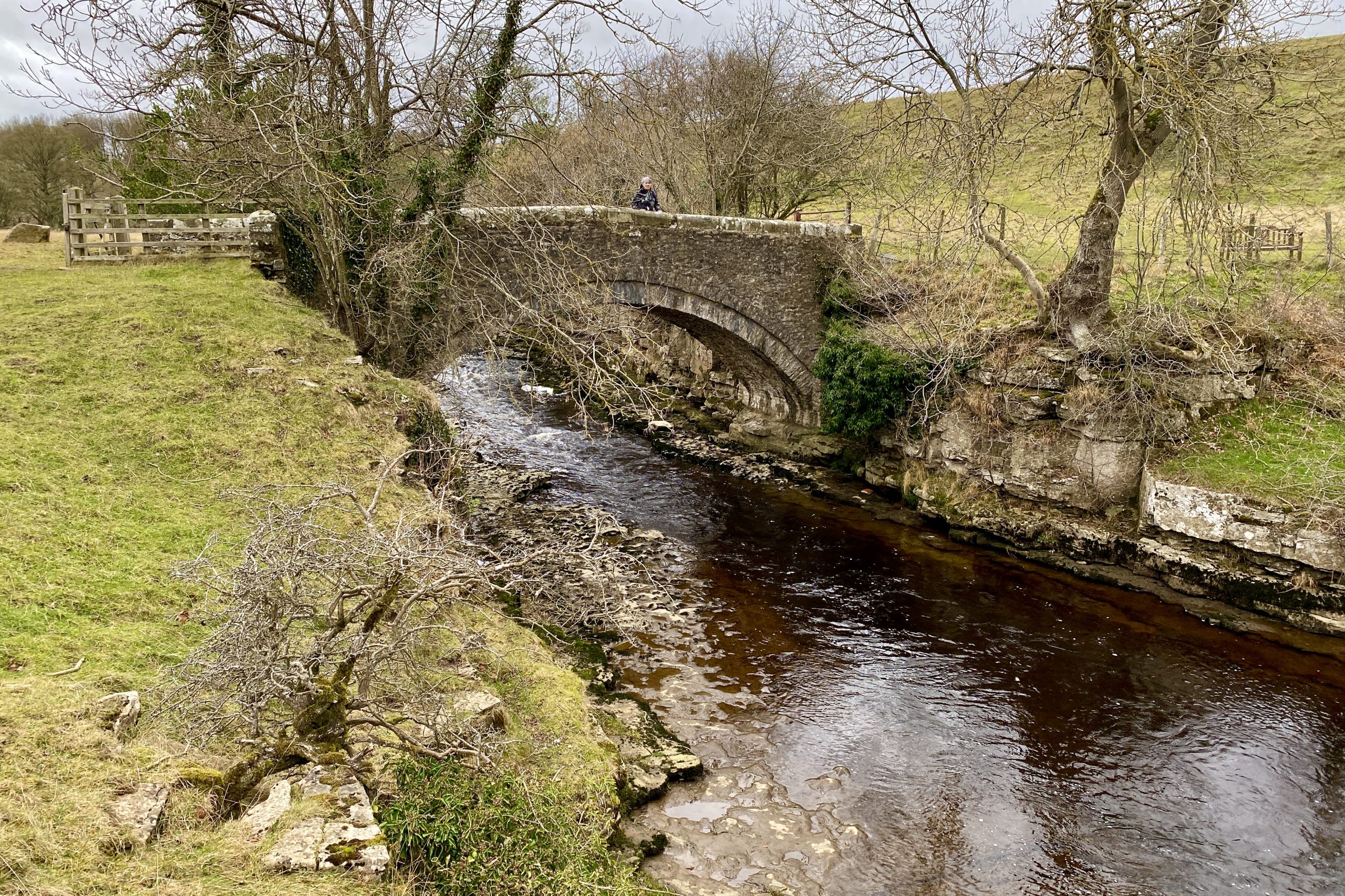South from Middleham along the Six Dales Trail to the River Cover and east through woodland and across farmland to Cover Bridge. Continuing on the Six Dales Trail, it’s south-east following the course of the river all the way to Jervaulx Hall, and after a visit to Jervaulx Abbey it’s through Jervaulx Park to meet the A6108 main road at Masham Bank. South across the countryside to the village of Ellingstring, then generally north-west via Hammer Road and Deep Gill to reach East Witton. Lastly west by way of West Field Lane to Hullo Bridge before heading north-east back to the starting point. A 12-mile walk in Northern England.

Recommended Ordnance Survey Map
The best map to use on this walk is the Ordnance Survey map of Northallerton & Thirsk, reference OS Explorer 302, scale 1:25,000. It clearly displays footpaths, rights of way, open access land and vegetation on the ground, making it ideal for walking, running and hiking. The map can be purchased from Amazon in either a standard, paper version or a weatherproof, laminated version, as shown below.
The River Cover.

Large stepping stones over the River Cover between Middleham and East Witton.

Jervaulx Abbey
A sign in the grounds of the abbey, which features a sketch by Turner, reads as follows:
JMW Turner visited Wensleydale in the summer of 1816 whilst on his tour sketching for ‘A General History of the County of York’ by Thomas Dunham Whitaker.

His journey brought him to the ruins of this Cistercian Abbey founded in 1156. Jervaulx was once one of the busiest and wealthiest of the North Yorkshire abbeys. Its prosperity grew from sheep rearing and breeding horses. The monks here produced and sold a cheese which evolved over the centuries to become today’s world-famous Wensleydale Cheese. The Abbey is sited near to the River Ure in a fertile valley, making it an ideal location for the Cistercian monks to settle.

Turner would have been impressed with this fine Abbey built in the sweeping valley. Turner’s view of the Abbey is from the east in Jervaulx Park. The sketch shows the Abbey in the wide valley with smoke rising from the fields, possibly farmers burning stubble for ploughing. Enjoy a short walk on the public footpath through the parkland to where Turner stood and sketched this magnificent ruin.

Snowdrops in Jervaulx Park.

Curious sheep follow us as we cross the farmland at High Jervaulx.

An old school house in the village of Ellingstring.

Thirsting Castle Lodge, Deep Gill, between Ellingstring and East Witton.

The lovely village of East Witton.

The Old Chapel, East Witton, now a luxury holiday home.

Bill’s Seat
Sit for a while and enjoy the sights and sounds of this riverside woodland.
Bill’s Seat celebrates the work of Bill Frith, Steve Gale and friends from the Leyburn group of the Otley and Yorkshire Dales branch of the Dry Stone Walling Association. Over a period of 4½ years, under Bill’s watchful eye and unwavering determination, these National Trust volunteers have rebuilt over 400 metres of dry stone wall to protect the natural regeneration of the woodland.
The area around Bill’s Seat contains native large leaved lime trees, which are rare in the UK. In Coverdale they are near the northern limit of their natural distribution. These trees may well be relics of the ‘Wild Wood’ that extended across much of Britain after the last ice age.
Limes here have found sanctuary on the cliff edges of the River Cover. The roots of these trees live a long time and they continually send up new saplings from the base of the existing tree. The newly renovated wall keeps grazing livestock out and allows these saplings to develop in to mature trees.

The River Cover is a gently meandering river with a characteristic stony channel and beaches leading to wooded low banks.

Hullo Bridge across the River Cover about a mile south-west of Middleham.

Middleham Castle
Best known as one of the childhood homes of Richard III, Middleham Castle dominates the North Yorkshire town of Middleham. From the core of its Norman great tower the castle developed under the powerful Nevilles into a residence worthy of a family who influenced English affairs for over two centuries. Richard, Duke of Gloucester (later Richard III) spent his youth at Middleham and it became one of his royal homes.

Middleham Castle as it stands today is the product of multiple phases of building between the 12th and the 15th centuries. The great tower or keep, one of the largest in the country, was probably built in the 1170s.
Information from https://www.english-heritage.org.uk/visit/places/middleham-castle

The old school house in Middleham, built in 1869.
